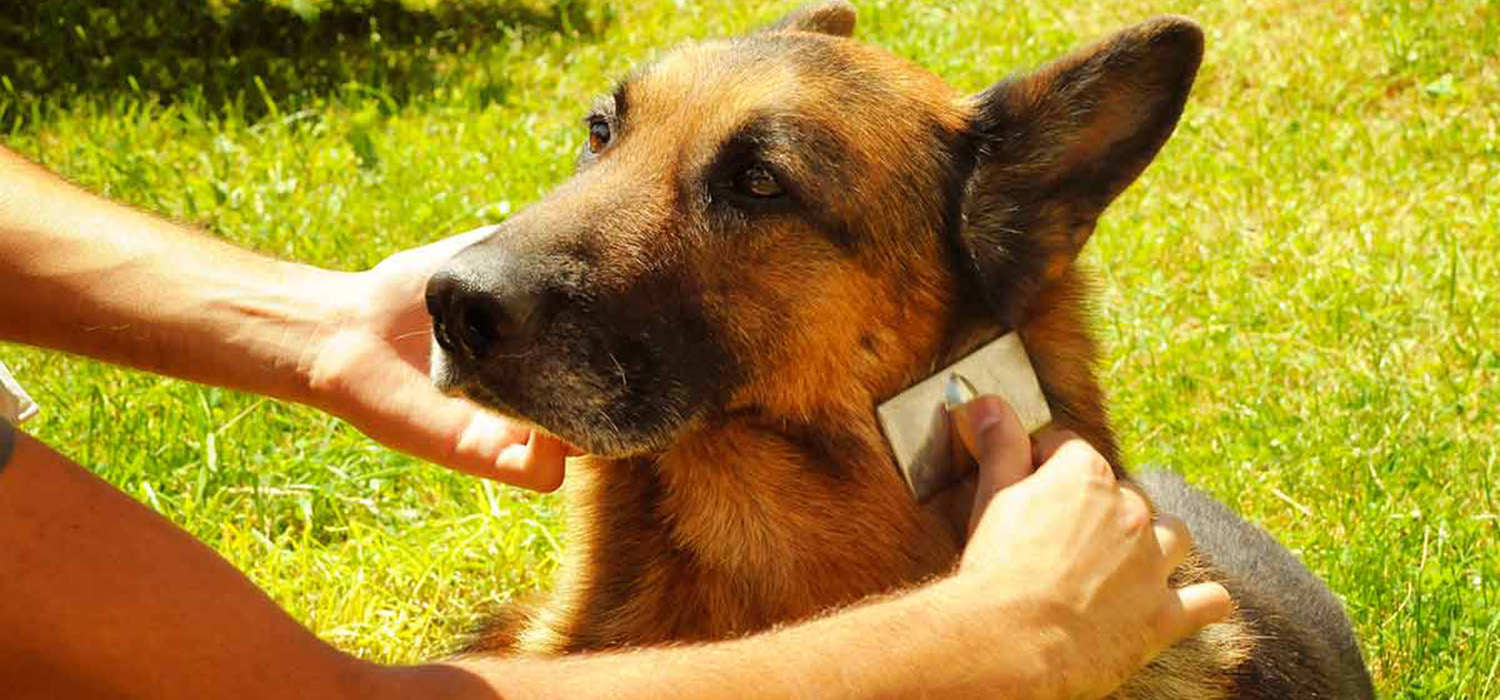 During late spring and summer, grass seeds and burrs are the bain of the dog owner’s life. Many dogs undergo operations to remove these damaging beasts which sometimes are not successful the first time round and so a possible second or even third operation is necessary to remove the damaging grass seed. This can lead to very expensive veterinary bills and several weeks of healing for the dog.
During late spring and summer, grass seeds and burrs are the bain of the dog owner’s life. Many dogs undergo operations to remove these damaging beasts which sometimes are not successful the first time round and so a possible second or even third operation is necessary to remove the damaging grass seed. This can lead to very expensive veterinary bills and several weeks of healing for the dog.
……….
What are the Symptoms of a Grass Seed or Grass Burr in a Dog?
Symptoms that may cause you to consider a grass seed or grass burr lodgement in any part of your dog’s body can include (read further down for more detailed information):
- Excess scratching or shaking of the head;
- Constant licking;
- Redness and swelling or an abscess around the entry point (if it has lodged via the outer part of the body);
- A hole can sometimes be seen at the entry point;
- A grass seed entered in the nose can be indicated by excessive scratching, sneezing and mucous discharge;
- A grass seed entered in the ear can cause your dog to excessively scratch the ear, redness and swelling which eventually can develop into ear infection;
- If a grass seed has been swallowed then there may not be any immediate symptoms but could possibly be indicated by coughing, nausea, lethargy, loss of appetite, breathing difficulties.
 NEW Dog Gear in ALL NEW Colors. Available Now @ Ruffwear.com
NEW Dog Gear in ALL NEW Colors. Available Now @ Ruffwear.com
What do Grass Seeds Look Like?
 The worst offending grass seeds look like spiky arrows and are generally found on the long dry grasses. These have fibres which allow them to attach to various surfaces and by their very nature can get caught up in any type of dog coat, whether it be long or short. The photographs on this page are a few of the types of grass seeds to watch out for.
The worst offending grass seeds look like spiky arrows and are generally found on the long dry grasses. These have fibres which allow them to attach to various surfaces and by their very nature can get caught up in any type of dog coat, whether it be long or short. The photographs on this page are a few of the types of grass seeds to watch out for.
Other types of grasses have prickles or burrs and they don’t enter the dog’s body but they can get caught up in a long coated dog and result in the coat matting up. If not checked regularly they become a nuisance and may result in the coat needing to be clipped off.
Thorny type prickles can dig into the dog’s paw if he/she steps on them and can cause the dog pain. Generally these can be removed quite easily if they are large.
 All Season Paw Protection. FREE SHIPPING TODAY on ALL Ruffwear Dog Boots!
All Season Paw Protection. FREE SHIPPING TODAY on ALL Ruffwear Dog Boots!
To protect paws in extreme environments and varied terrain, consider the Grip Trex. The tightly woven air mesh upper makes the boot breathable even as it keeps dirt and debris out. The Grip Trex also features a Vibram outsole with a rugged lug design, providing flexibility and traction on varied terrain. The hook-and-loop cinch closure system is reliable and secure, and reflective trim offers low-light visibility.
When are Grass Seeds at their Worst?
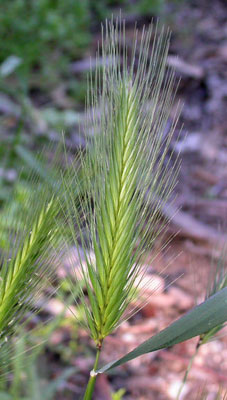 Grass seeds and burrs are generally more prolific in the springtime although will be around well into the summer months. After the winter rains and the grasses have grown the seeds will also grow. As the summer approaches, the grasses dry out and so do the seeds and prickles and then they become brittle and break off. The time at which grass seeds become dry and loose is the time they are at their as far as your dog being vulnerable to them.
Grass seeds and burrs are generally more prolific in the springtime although will be around well into the summer months. After the winter rains and the grasses have grown the seeds will also grow. As the summer approaches, the grasses dry out and so do the seeds and prickles and then they become brittle and break off. The time at which grass seeds become dry and loose is the time they are at their as far as your dog being vulnerable to them.
Keep your dog well brushed after a walk through long grasses and bush!
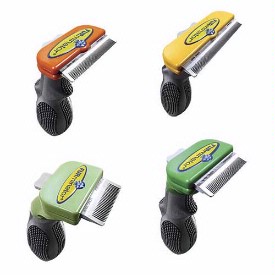 Grooming your dog with Furminator De-shedding Tools immmediately after walking in bush or long grasses will not only remove any loose hair but also will catch any grass seeds or debris caught in your dog’s coat.
Grooming your dog with Furminator De-shedding Tools immmediately after walking in bush or long grasses will not only remove any loose hair but also will catch any grass seeds or debris caught in your dog’s coat.
Check out the prices for these at Chewy.com!
Grass Seeds and Your Dog’s Body?
The arrow-like grass seeds can lodge virtually anywhere on your dog’s body. The easiest and most common place for your dog to pick up grass seeds is in the paws, particularly if your dog has a longer coat, however if your dog happens to roll on a patch of dead grass then the seeds can be picked up all over the body. It is for this reason it is important to check the dog all over every day during this time when they are at their worst. Not only can the grass seeds enter the dog’s paws but keep an eye out for the following signs:-
Paws – The most common way a dog can pick up grass seeds is through the paws whilst walking. Generally, they get caught between the pads through sticking to the fur and lodging next to the skin. If not checked regularly and removed, the sticky point of the seed will lodge its way into the dog’s skin, penetrating the skin as the dog runs and walks. Eventually the grass seed will force its way into the paw leaving a red swollen area and generally a visible hole.
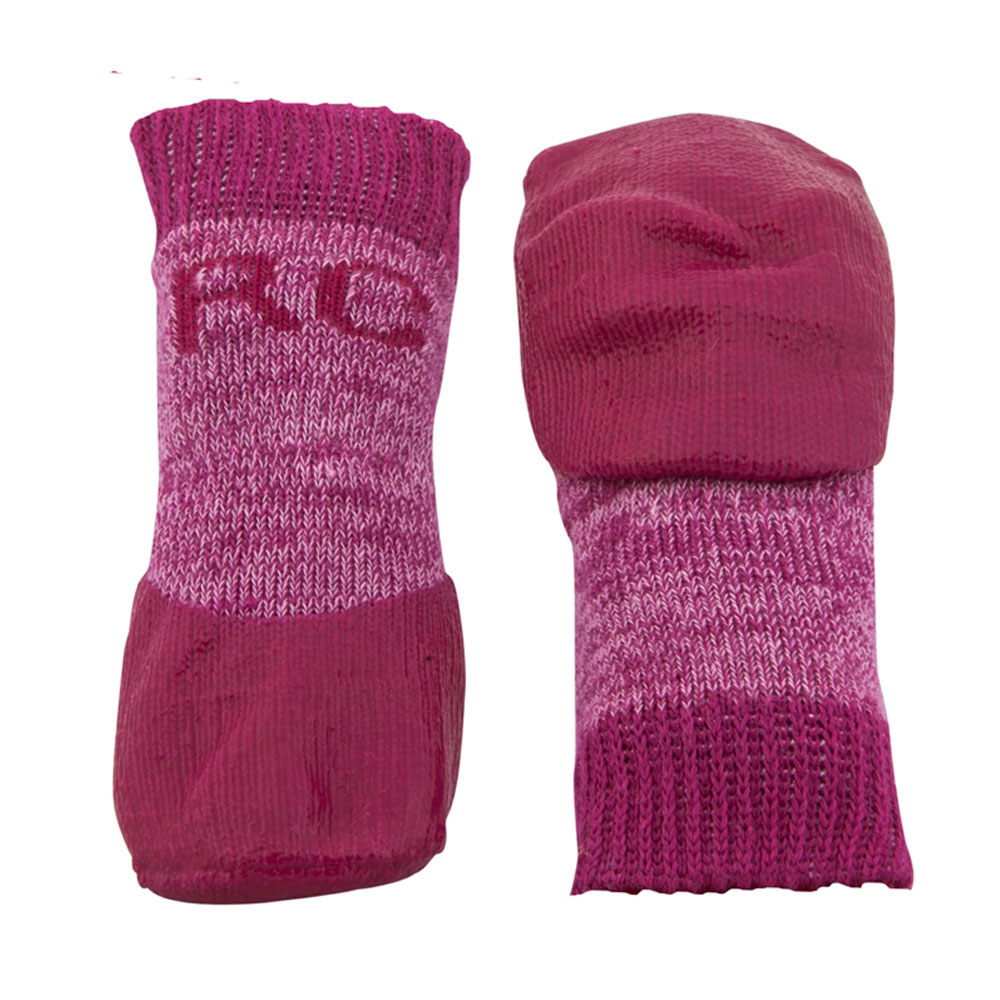
For general indoor or outdoor paw protection check out the range of boot and leg protectors at Cherrybrook.com!
RC PAWks dog boots are anti slip dog boot socks for dogs that provide both traction and protection for your dog’s paws. These comfortable boots are perfect for both indoor and outdoor use, are re-usable and machine washable. Stretchy, cotton spandex assures a firm, comfortable fit. Set of 4 boot socks. They come in sizes from EXTRA SMALL to EXTRA LARGE and are available in Charcoal, Lime and Pink.
Ears – If you notice your dog shaking his head, scratching his ear or holding his head to one side and there is no sign of an real ear infection then a grass seed could be the cause. If a grass seed moves into the ear canal it can cause a range of problems if not treated early. See your veterinarian urgently.
Nose – Sneezing, a dog pawing at its nose and there is some nasal discharge then can be a sign of a grass seed caught up in the nasal passage.
Eyes – If your dog shows redness and inflammation in the eye area and a discharge appears then get your vet to check whether a grass seed is lodged in that area. If left untreated this can cause blindness in the dog.
Mouth – If the dog inhales a grass seed it can then travel into the throat and internally further into the stomach area. Sometimes it may lodge on the way down causing abscesses or damage to the internal organs or even the spinal area. Your dog could show symptoms of illness and attempting to vomit, refusal to eat, coughing, fever or breathing difficulties. If you suspect your dog has ingested a grass seed, seek immediate veterinary attention.
Skin – Grass seeds will first lodge in the dog’s coat. If these are not located and removed early on they will start to enter the skin with their spiky fibres. The dog will start to scratch and bite in the area affected. The grass seed will keep penetrating and eventually work its way right inside into the body. Once inside the body the seed then gradually travels along causing swelling and infection or abscesses along the way. If the seed enters via the paw then it will start to travel up the leg. If it enters via the chest then the lungs and breathing could be affected.
………………….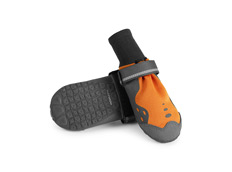 ……………………………
……………………………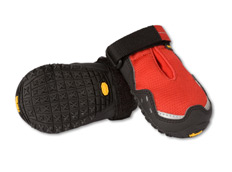 ……..
……..
……………..Summit Trex Dog Boots from Ruffwear.com Grip Trex All-Terrain Paw Wear by Ruffwear
These high-performance boots feature a rugged and resilient Ruffwear-designed Vibram outsole that provides exceptional traction on varied terrain. Breathable mesh upper provides ventilation and keeps dirt and debris out. Closure system combines hook-and-loop with hardware, cinching around the narrowest part of the dog’s leg to provide a secure fit.
How to Remove a Grass Seed from Your Dog?
 Removing a grass seed would only be attempted if you can still see it protruding from the entry point. If it is not too deeply entered it is possible to pull it out with your fingers or tweezers. Pull the grass seed out carefully taking care not to leave any remnants inside. If you do manage to pull one out before it has gone too far in, the wound should heal fairly quickly. If you have pulled the seed out but it is not healing then there may be some remnant still left in there. You would need to take the dog to the vet for this.
Removing a grass seed would only be attempted if you can still see it protruding from the entry point. If it is not too deeply entered it is possible to pull it out with your fingers or tweezers. Pull the grass seed out carefully taking care not to leave any remnants inside. If you do manage to pull one out before it has gone too far in, the wound should heal fairly quickly. If you have pulled the seed out but it is not healing then there may be some remnant still left in there. You would need to take the dog to the vet for this.
A grass seed that lodges in any other part of the dog’s body, whether it be the face, neck, throat, ears, tail or body, will show the same symptoms. There will be redness and swelling and a hole which will look infected. If it lodges into these other parts you may not see any other evidence and it is urgent that you get your dog to the vet immediately. This is because you won’t know how far along it has progressed and it will keep travelling, causing infection along the way.
Unless you can clearly see the grass seed, then it is advisable to take your dog to the vet for removal. Sometimes they can operate and not actually find the seed first time round. If this is the case, and the swollen area has not gone down to normal size, then it is likely it will be necessary for the dog to have a second operation. Vets cannot guarantee that they will be able to find and remove the seed the first time round, particularly if it is located in the dog’s paw.
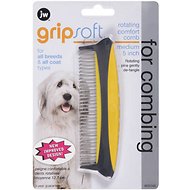 JW Pet Rotating Comfort Comb comes equipped with a rubber-sheathed handle design, which offers extreme comfortability and precision. This Gripsoft technology features non-slip grips which are made to optimize comfort and control while grooming your furry friend. This specially designed comb features rounded stainless steel teeth that rotate 360 degrees to get to those hard to reach places making it an excellent finishing tool for all breeds and coat types. A comb like this can be useful for removing grass seeds from your dog’s coat.
JW Pet Rotating Comfort Comb comes equipped with a rubber-sheathed handle design, which offers extreme comfortability and precision. This Gripsoft technology features non-slip grips which are made to optimize comfort and control while grooming your furry friend. This specially designed comb features rounded stainless steel teeth that rotate 360 degrees to get to those hard to reach places making it an excellent finishing tool for all breeds and coat types. A comb like this can be useful for removing grass seeds from your dog’s coat.
How to Protect a Dog from Getting Grass Seeds?
There are several ways you can protect your dog from getting grass seeds:
- Avoid walking your dog in long grassy areas unless absolutely necessary – i.e. walk your dog on short green grass or on pavement.
- Purchase some protective boots for your dog’s paws and put them on each time you go out walking.
- After each walk check your dog’s coat and especially in between the pads on the paws for any bits of debris which might do some damage. Also check inside the ears and mouth.
- Brush your dog’s coat regularly (preferably using a slicker brush) which will clear your dog of any seeds or burrs caught up in the coat. This will also prevent matting.
- Trim the dog’s paws with the scissors to reduce the chance of the dog picking up grass seeds or prickles. Also trim around the groin area and under the armpits as well as around the ears.
- Don’t allow your dog to chew grasses which have the seed heads on them.
- Keep your yard free from weeds and grasses which look like they could be potentially harmful and hurtful to your dog.
Paw protection products for your dog at Amazon.com!
Related Topics:
How To Groom Your Dog With Clippers
How To Trim Your Dog’s Face, Feet and Tail
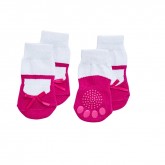 Check out these cute little doggie socks from Petbarn.com.au!
Check out these cute little doggie socks from Petbarn.com.au!

